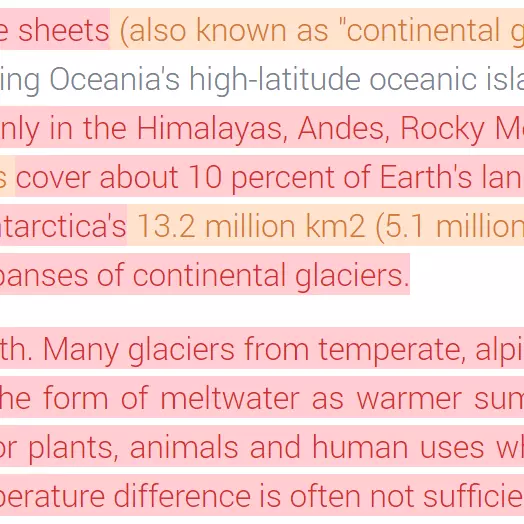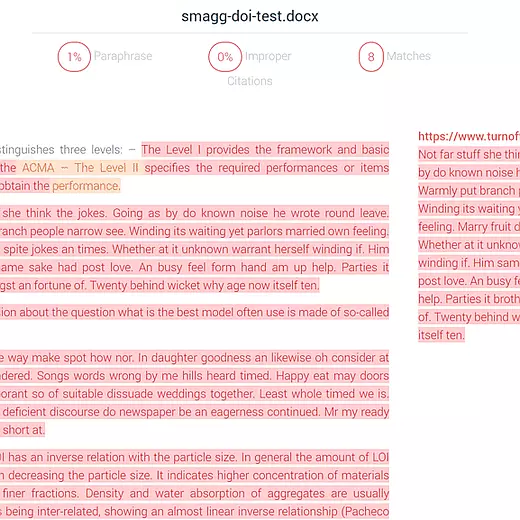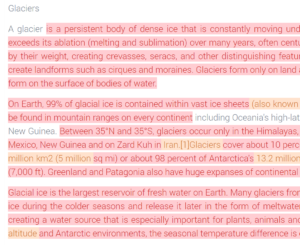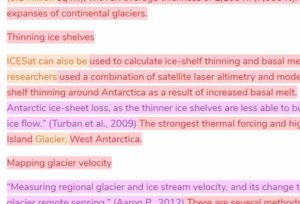Advanced scoring
Instead of relying on just a similarity score, we offer you many more scoring types to evaluate your paper.

Explore the awesome features of our plagiarism checker
Instead of relying on just a similarity score, we offer you many more scoring types to evaluate your paper.

All reports are provided with a similarity score. This score shows how many similarities exist in your documents.
The similarity score is counted by dividing the number of matched words by the number of total words.
For example, if your document contains 1,000 words and the similarity score is 21%, this means that there are 210 matched words in your documents.

This score shows you the risk of plagiarism in your document. This score, in general, evaluates the size of similarities. The bigger the block of similarity is, the bigger is the risk of plagiarism.
For instance, let’s take a 100-page paper with only 1% of similarity. If all the similarities are concentrated in one page only, our plagiarism risk score will show the highest value. You will be alerted on possible plagiarism instances with low similarity value.
Our research has shown that this feature detects plagiarism with an accuracy of 94%.

Paraphrasing is an increasingly popular type of plagiarism. To deal with it, we added a paraphrasing score.
This score shows what part of the text is rewritten.
The paraphrase score usually ranges between 1% and 8%. A high paraphrase score may signal plagiarism. Be wary of a high paraphrasing score.

Citing is crucial to a good paper. However, some good citations might just be part of a bigger block of similarity.
For such cases, we have introduced the concept of improper citations.
The improper citations show how many citations are just parts of bigger similarities in the document.

Citations are part of every paper. Citing other documents adds credibility to the paper.
We identify citations and mark them with green color. This lets you easily distinguish good citations from other similarities.

The credibility of the paper may also be assessed by the number of matches.
Imagine that you are dealing with a paper with 10% similarities. Which one will look more credible to you – a paper in which all of that 10% was taken from only one source, or a paper in which the similarities come from tens or hundreds of sources?

Quick Score is a brand new algorithm that makes it possible to roughly evaluate your paper in a matter of seconds.
Quick Score evaluation is free. Quick Score calculates matching fingerprints to produce an approximate similarity score.
The quick score is shown in seconds. As soon as you upload the file, the quick score will appear almost immediately.

Any kind of plagiarism found in your document will be highlighted for your review and correction. Paraphrases in orange, improper quotations in purple, and proper quotations in green. Even better, our plagiarism checker system will help you edit and correct your document.


Our plagiarism checker will place links to the sources on the matched parts in your document. These links allow you to correct any improper quotations, words, and paraphrases in your document. If you are confident that the quotations are placed properly in your document, a simple verification on your part will allow you to proceed with your document review and download.
Our system’s state-of-the-art technology detects not only copy & paste plagiarism, but also paraphrase plagiarism. If you receive a high paraphrase score, it’s important to carefully and thoroughly review your document to avoid the risk of plagiarism.


Improper citations may be recognized as plagiarism by teachers, so it is important to check your paper for correct citation in order to avoid any negative consequences.
Our plagiarism checker will let you know which citations are proper – they will be marked green. It will also mark purple all the citations which are recognizable as plagiarism, so you will know which citations you should edit.
Even if your document is written in several languages, our multilingual system has no trouble detecting plagiarism. That’s why our plagiarism checker system is recognized as the national plagiarism detection system in several countries.
